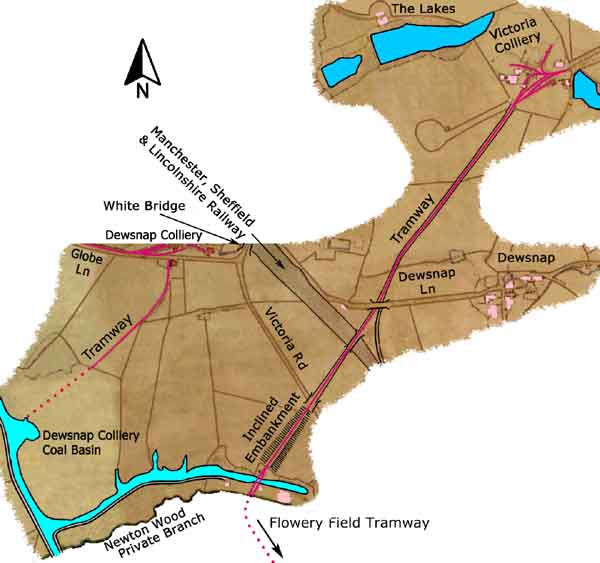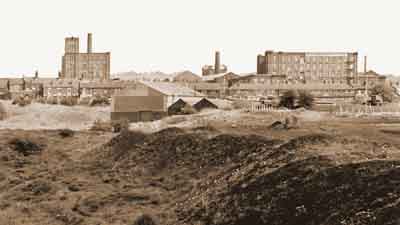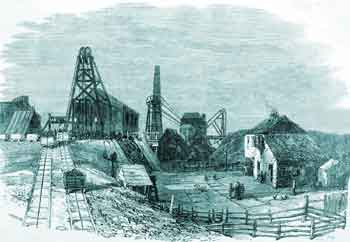
This branch was about 247-yards long and it was situated on the offside of the canal between Dukinfield Hall (or Well) Bridge and Newton Hall Bridge. It was used by the Duknkirk Coal Company and its successors. By 1888, Jamieson's Dye Manufacturing Works had been built alongside it. The Tithe Map of 1850 shows that there was a path along the south side of the branch from Newton Hall Bridge that extended for about two thirds of the length of the branch. It is possible that this was a basic path for boat horses to use rather than a properly constructed towpath with coping stones alongside the branch.
For details of Dunkirk Coal Company click here » Dunkirk Coal Co

Newton Wood Private Branch
Lower Peak Forest Canal
Courtesy: Cheshire Archives & Local Studies

Remains of the Newton Wood Private Branch, May 1976.
Victoria and Albert Mills stand in the background on Victoria Rd.
Coal from Victoria Colliery (aka Dukinfield Colliery, Lakes Pit or Astley's Colliery) was conveyed down a tramway to a staithe on the Newton Wood Private Branch. The tramway was just over half a mile long passing below Dewsnap Lane, over the line of the Manchester, Sheffield and Lincolnshire Railway and then over Victoria Rd. Between Victoria Rd and the staithe the tramway was on a sizeable inclined embankment. The tramway was probably a self-acting incline plane where descending waggons full of coal hauled ascending empty waggons back to the colliery under the action of gravity. At the foot of the incline a waggon tippling device was provided that enabled boats to be loaded with coal.
Work to fill the shafts of Victoria Colliery commenced in Sep 1903 and in 1904 a notice appeared in the London Gazette concerning the completion of the winding up of Dukinfield Collieries Ltd, the final owners. Today there is no trace to show its former existence and its site is now a large playing field in the angle between Boyd's Walk and Armadale Rd.
The local name of Lakes Pit was derived from 'The Lakes', a large house built near two small reservoirs referred to as lakes. For many years, this house was the home of William Bass, a steward for the Astley family, who was a member of the brewing family. He died in 1889, aged 63 years. A later occupant was Dr Frank Gerald Ralphs (1881-1969) a striking man, 6 feet 7 inches tall, who had a military career as a surgeon serving with the Royal Army Medical Corps. Later, he became a Coroner for the area. The two lakes are no longer extant as Dr Ralphs had them drained and filled in after a man drowned in one of them. Dr Ralphs died in 1969, aged 87 years, and he left 'The Lakes' to Mrs Eileen Meredith who converted it into a nursing home. Today, it is still a nursing home and it stands on Ralphs Lane off Boyd's Walk.
Victoria Colliery was also referred to as Astley's Colliery because the township of Dukinfield was centred on the estates of Francis Dukinfield Palmer Astley (1825-68) and his successors.

Victoria Colliery.
Victoria Colliery Disasters of 1866 and 1848
In 1866 an underground explosion occurred in which 38 miners were killed.
It was an explosion of firedamp, the ignition being caused by a naked flame. At the time of this disaster the colliery was owned by Dukinfield Colliery Co and the manager was Isaac Whelden.
The disaster of 1866 was preceded by a smaller disaster that occurred in 1848.
For details of these disasters click here » Victoria Colliery